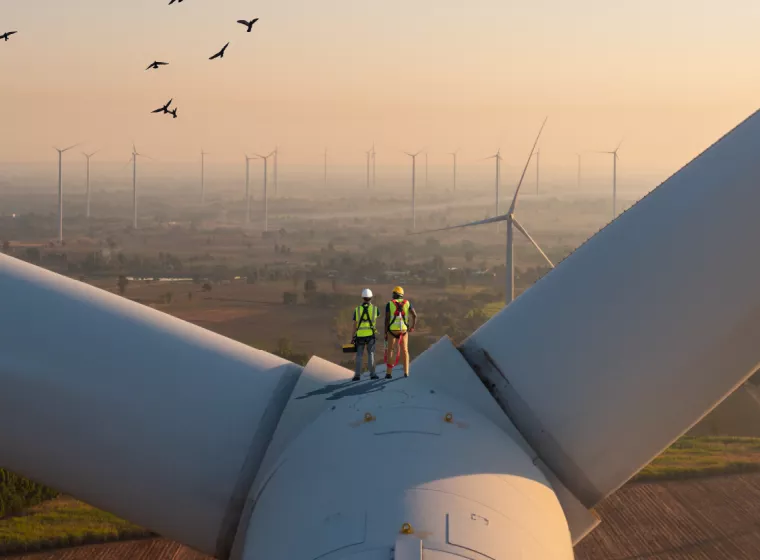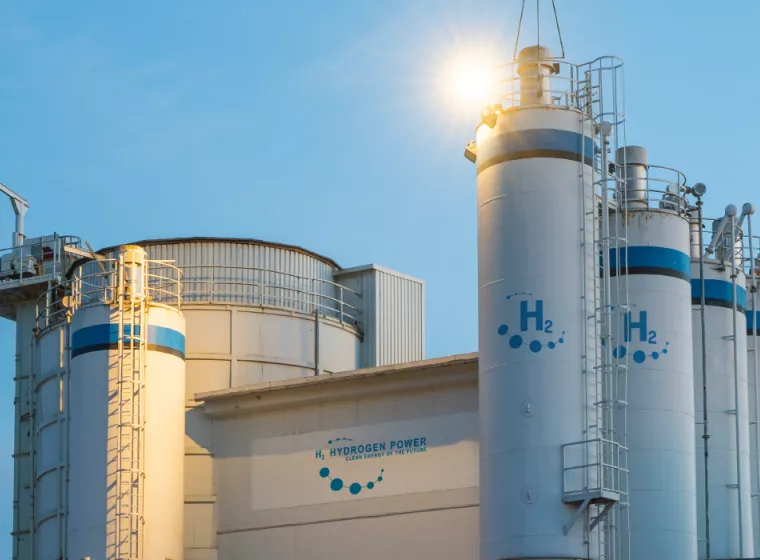June 14, 2023
Proposed regulations seek major greenhouse gas cuts from power plants through carbon capture and storage and hydrogen co-firing technologies by 2030
The Environmental Protection Agency (EPA) recently proposed new power plant greenhouse gas (GHG) standards that would phase in carbon capture and storage (CCS) and low-carbon hydrogen requirements starting in 2030. Facilities would have to co-fire with 30% hydrogen by 2032 and with 96% hydrogen by 2038.
EPA says last year's Inflation Reduction Act (IRA) provides direct support for the new power plant rules, thereby reaffirming the agency's existing Clean Air Act (CAA) authority that the Supreme Court narrowed in its landmark West Virginia v. EPA decision striking down the Obama-era Clean Power Plan. The agency relies on the IRA's CCS and low-carbon hydrogen tax credits to demonstrate that these technologies are part of the best system of emission reduction (BSER), which requires that the technologies must be cost effective and adequately demonstrated.
If adopted, the new standards will likely force states and utilities to assess how long they can realistically keep their existing coal- and gas-fired power plants up and running.
Opposition to EPA's proposed greenhouse gas emissions rules
The proposals are expected to face a series of legal, technical, and political challenges. The "adequately demonstrated" requirement is expected to be a major point of debate between those opposing and advocating the new proposals.
Those opposed are expected to argue that CCS and hydrogen are at too early a stage of development to be considered "adequately demonstrated" and that the regulations must be grounded in what is technologically feasible and commercially available. Permitting is also expected to be a point of contention, due to the limited regulatory frameworks for CCS and hydrogen.
Advocates will likely counter that the technologies do not have to be in widespread commercial use to be "adequately demonstrated." Some point to sulfur scrubbers: only three were in operation, with only one vendor, when EPA set standards. By comparison, they note that CCS has been installed at two large-scale coal plants and at least 13 vendors have done testing and offer carbon capture pollution controls specifically for coal- and gas-fired power plants.
Potential impact of EPA's proposed greenhouse gas emissions rules
The proposed standards would apply to new and existing power plants and differentiate among types of power, how often they run, and the remaining useful life of each plant. For example, coal-fired plants that plan to operate past 2040 would be expected to install CCS systems, while coal plants slated to retire earlier could employ less stringent and expensive controls, such as co-firing with gas. States would be required to submit compliance plans within 2 years of the proposed regulations going into effect in 2030.
If adopted, the new standards will likely force states and utilities to assess how long they can realistically keep their existing coal- and gas-fired power plants up and running. Utilities and power plant operators will need to evaluate different carbon capture systems that can meet the proposed requirements and determine how to retrofit these to existing plants.
Operators will also need to navigate uncertain regulatory frameworks when they apply for construction and sequestration permits. Operators constructing new power plants may consider taking steps to ready their plants for hydrogen co-firing, and facilities considering underground sequestration of carbon will be required to conduct geologic and hydrologic surveys and modeling to understand the fate of injected carbon dioxide and any risk of impacts to drinking water supplies or other natural resources.
What Can We Help You Solve?
Exponent's multidisciplinary team of mechanical and chemical engineers and environmental, thermal, and polymer scientists can help you assess the impact of EPA's proposed regulations. We can help clients understand the opportunities and challenges associated with new requirements and evaluate potential emission reduction strategies.







